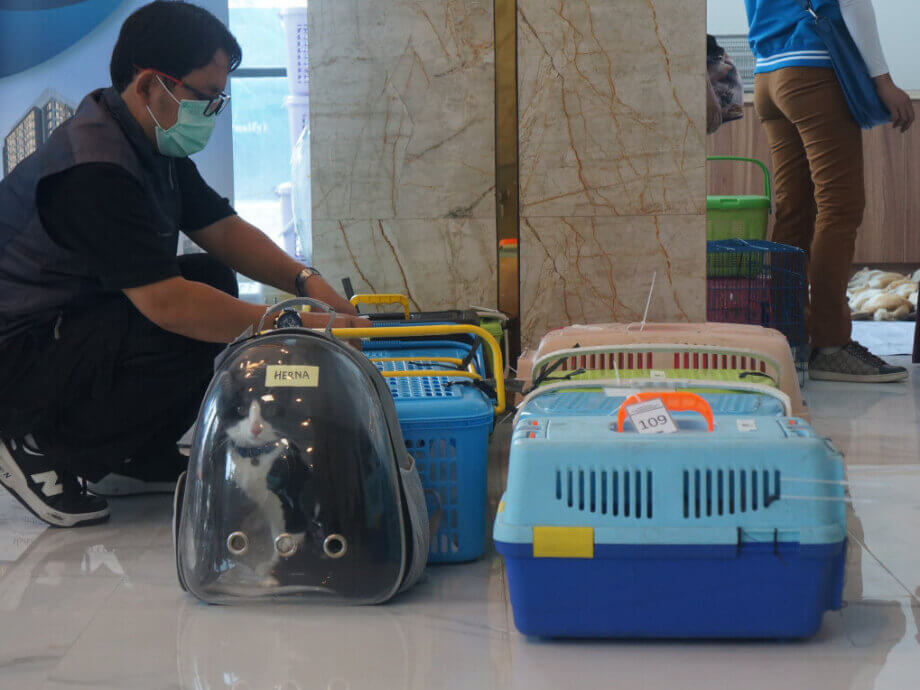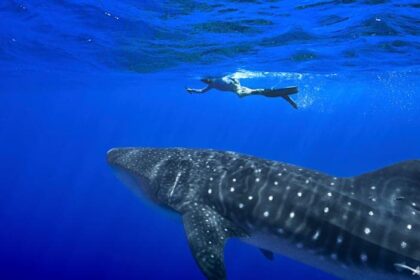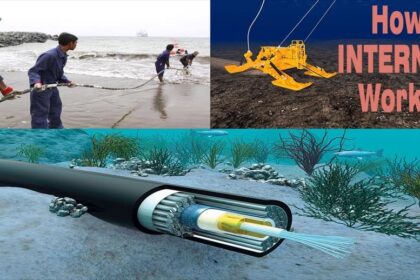Jakarta’s Ambitious Cat Island Proposal: A New Home for Stray Felines?
Jakarta, Indonesia’s sprawling capital, is facing a mounting crisis: an explosion in its stray cat population. With estimates ranging from 750,000 to over 860,000 stray cats roaming the city’s streets, markets, and neighborhoods, the issue has become a significant concern for public health, animal welfare, and urban management. In response, Governor Pramono Anung has unveiled a bold and controversial plan: relocating thousands of stray cats to a designated “cat island” in the Thousand Islands regency, off the coast of Jakarta. The proposal, inspired by Japan’s famed cat islands, aims to create a sanctuary for stray cats while also boosting tourism and public education about animal welfare.
- Jakarta’s Ambitious Cat Island Proposal: A New Home for Stray Felines?
- Why Jakarta Wants a Cat Island
- How Would the Cat Island Work?
- Animal Welfare and Public Health: The Core Concerns
- Ecological Risks: What Happens to the Island’s Wildlife?
- Lessons from Japan: Are Cat Islands Sustainable?
- Community Reactions: Hope, Skepticism, and Local Concerns
- Implementation Challenges: Logistics, Funding, and Sustainability
- Alternatives and Complementary Solutions
- In Summary
But as the plan gains attention, it has sparked a heated debate among animal welfare advocates, environmentalists, local residents, and policymakers. Is Jakarta’s cat island a compassionate solution, a potential tourist magnet, or a risky ecological experiment?
Why Jakarta Wants a Cat Island
The idea of a cat island is not new. In Japan, islands like Aoshima and Tashirojima have become world-famous for their large feline populations, attracting cat lovers and curious tourists from around the globe. These islands, where cats often outnumber humans, have become symbols of peaceful coexistence and unique tourist destinations. Governor Pramono Anung hopes to replicate this success in Jakarta, envisioning an island sanctuary that serves as both a home for rescued strays and a source of revenue through tourism and education.
Jakarta’s stray cat problem is severe. The city’s sterilization programs, while ongoing, can only reach a fraction of the population—about 20,000 cats per year—leaving the majority to reproduce unchecked. With cats capable of producing three to four litters annually, experts warn that the population could quadruple within five years, exacerbating risks of disease transmission, property damage, and ecological imbalance.
Governor Pramono has emphasized the dual goals of the project: to humanely manage the stray cat population and to create a new tourist attraction. “If we can make it happen, the island can be a source of revenue,” he told reporters, highlighting the potential for economic and educational benefits.
How Would the Cat Island Work?
The proposed cat island would be located in the Thousand Islands archipelago, a chain of about 340 islands stretching northwest from Jakarta. Authorities have identified Lesser Tidung Island—a 0.32 square kilometer, virtually uninhabited island with existing infrastructure—as the most suitable site. The plan is to relocate around 1,000 sterilized and vaccinated stray cats to the island, where they would be cared for in a controlled environment.
According to Hasudungan Sidabalok, chief of the Jakarta Food Security, Fisheries and Agriculture Agency, the island would not be a dumping ground. Instead, it would feature enclosed facilities, regular feeding, veterinary care, and ongoing population control through sterilization. The government envisions the island as a sanctuary, educational center, and tourist destination, complete with an animal clinic, exhibition spaces, and opportunities for visitors to interact with the cats.
“We will build a comfortable space for them where they will be well taken care of and groomed. People can visit this island which serves as both a tourism and an educational destination,” Hasudungan said. The city also plans to involve animal rights groups, veterinarians, and local communities in managing the sanctuary.
Animal Welfare and Public Health: The Core Concerns
While the plan has been welcomed by some as a humane alternative to culling, it has also raised significant concerns among animal welfare advocates and experts. Shinta Saraswati, a member of the Jakarta Cat Lovers community, warns that without proper management and funding, the island could become a “dumping ground” for unwanted cats, leading to neglect and suffering.
Shinta Saraswati voices her concerns:
“The administration must also factor in how local residents might respond to the relocated cats to prevent potential conflict. Don’t rush or insist on creating a cat island. It sounds beautiful, but it’s not necessarily easy to implement.”
Veterinarian Abid Mursyid echoes these worries, emphasizing the need for comprehensive health services—deworming, flea treatment, vaccinations—to minimize disease transmission. He also stresses the importance of assessing the island’s ecological suitability, including climate, food availability, and biodiversity, before moving forward.
Public health experts, such as Professor Ronny Rachman Noor of IPB University, highlight the risks posed by uncontrolled feral cat populations. Cats can spread zoonotic diseases like rabies, toxoplasmosis, and even certain coronaviruses, posing threats to both human and animal health. Past outbreaks in other countries, such as the Feline Coronavirus epidemic in Cyprus, serve as cautionary tales.
Ecological Risks: What Happens to the Island’s Wildlife?
Perhaps the most contentious aspect of the cat island proposal is its potential impact on the local ecosystem. The Thousand Islands are home to diverse wildlife, including endangered species and important conservation sites. Lesser Tidung Island, for example, hosts a sea turtle hatching site and a mangrove seeding ground. Introducing a large population of cats—natural predators—could threaten native birds, reptiles, and small mammals.
Femke den Haas, founder of the Jakarta Animal Aid Network, is particularly concerned:
“The Thousand Islands is home to many species which need to be protected. If the city government wants to put hundreds of cats on a small island, will they not catch the local wildlife?”
There are already reports of cats being dumped on uninhabited islands in the archipelago, where they have become feral and pose a threat to local fauna. These cats often suffer from hunger, disease, and conflict with other animals, raising questions about the ethics and sustainability of further relocations.
City council members are divided. Some argue that the island’s conservation status should preclude the introduction of non-native predators, while others see potential for tourism and economic development if the project is managed responsibly.
Lessons from Japan: Are Cat Islands Sustainable?
The inspiration for Jakarta’s plan comes from Japan’s cat islands, but experts caution that these examples may not be directly applicable. In Japan, cat populations on islands like Aoshima and Tashirojima developed gradually over generations, often with the support of local residents who provided food and care. The number of cats on these islands is relatively small—Aoshima had about 210 cats at its peak—and recent reports indicate that the population is aging and declining due to inbreeding and lack of resources.
Mahawan Karuniasa, an environmental science lecturer at the University of Indonesia, notes that Japan’s cat islands are not the result of mass relocation, but of organic community development. He warns that Jakarta’s plan to move 1,000 cats at once is unprecedented and fraught with challenges. The sustainability of such a project depends on continuous funding, management, and high visitor numbers to cover operational costs.
“So even in Japan, cat islands are not sustainable,” Mahawan said, suggesting that resources might be better spent expanding Jakarta’s sterilization programs and supporting existing animal shelters.
Community Reactions: Hope, Skepticism, and Local Concerns
The proposed cat island has elicited mixed reactions from Jakarta residents and those living in the Thousand Islands. Some see it as an opportunity for tourism and economic growth, while others worry about the potential for nuisance, competition for resources, and ecological disruption.
Mukti, a resident of Greater Tidung Island, reflects the divided opinions:
“Some residents supported this plan because we could see more tourists coming and new economic opportunities emerging. But there are residents who wonder if the cats will encroach on our island, steal our food, eat our fish catch and become a nuisance to the community.”
Among Jakarta’s cat lovers, opinions are similarly split. Some believe the cats would be better cared for on the island, away from the dangers of city streets. Others question whether the funds would be better used to support animal shelters or expand sterilization efforts within the city.
Implementation Challenges: Logistics, Funding, and Sustainability
Turning the cat island vision into reality involves complex logistics. Authorities plan to conduct a large-scale campaign to capture, vaccinate, and sterilize stray cats before relocation. Only healthy, sterilized cats would be moved to the island to prevent uncontrolled breeding and disease outbreaks. The sanctuary would require ongoing management, including caretakers, veterinary staff, and regular supplies of food and medicine.
Funding is a major concern. The project’s long-term success depends on sustained investment from the government, partnerships with NGOs, and possibly private sponsors. The city hopes that tourism and educational programs will generate revenue, but experts caution that visitor numbers may not be sufficient to cover costs, especially if the novelty wears off.
To address these challenges, the government is consulting with environmental experts, animal welfare organizations, and local communities. The goal is to develop a sustainable operational model that balances animal welfare, ecological protection, and community interests.
Alternatives and Complementary Solutions
Many experts argue that the cat island should not be seen as a standalone solution. Mass sterilization, public education, and support for existing animal shelters remain essential components of any effective stray cat management strategy. Professor Ronny Rachman Noor emphasizes the importance of regular, collaborative sterilization programs involving veterinarians, animal lovers, and the government.
Public awareness campaigns can help change attitudes toward responsible pet ownership, discourage the abandonment of unwanted cats, and promote adoption from shelters. Community involvement is key to ensuring that population control measures are humane, effective, and socially acceptable.
In Summary
- Jakarta’s cat island proposal aims to relocate up to 1,000 stray cats to a sanctuary in the Thousand Islands, inspired by Japan’s cat islands.
- The plan seeks to address the city’s severe stray cat overpopulation while creating a new tourist attraction and educational center.
- Animal welfare advocates and experts warn of risks, including the potential for the island to become a dumping ground, disease outbreaks, and ecological harm to native wildlife.
- Lessons from Japan suggest that cat islands are not easily sustainable and require ongoing community support and resources.
- Local residents and policymakers are divided, with concerns about funding, management, and the impact on the island’s ecosystem.
- Experts recommend that the cat island be part of a broader strategy, including mass sterilization, public education, and support for animal shelters.
- The success of the project will depend on careful planning, collaboration, and a commitment to animal welfare and environmental protection.












